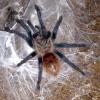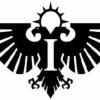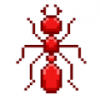The Nucleus formicarium is made from carved Ytong according to your request or species. The one I purchased has magnetic vents in the out world lid/top as well as the museum glass. Mack was very helpful with every step. I wanted this nest specifically for pogonomyrmex Californicus species so I have isolated dry areas as well as wet areas for the ants to choose where and what to store in the nest (mainly granaries).
EDIT: Sorry for the confusion. You guys are right--Ytong is used. I've mistaken been thinking of the "Atom" style formicaria when referring to "Nucleus," so ignore everything that follows this EDIT.
I don't think it's "carved" or "Ytong." It's poured and a plaster or grout mix, if you ask me.
1. I don't see any of the "holes" Ytong has. You can see the edges of the Nucleus substrate is rough on the side, but there are not holes. Notice also the flat smooth-surfaced top has no roughness or holes.
2. You can see a mold was used because of the ring around the middle in the second picture.
3. The magnets--they're embedded in the plaster or grout mix. They were put in place before the substrate was poured. A hole wasn't drilled and the magnets inserted. It's hard to tell from the pictures, but I can assured you, there substrate has solidified around the magnets.
4. Virtually impossible to produce the rough interior surface by "carving" dried substrate. The granularity of the interior's "roughness" is too fine to create with dremel or similar tool. Roughness characteristic has to be attributed to the mold, in my mind.
I would love to know the formula for this substrate that THA uses. I would have guessed hydrostone gypsum but I've never seen any gypsum crystals form even with high levels of hydration applied to the substrate (sometimes referred to as "sweating" or "dissolving.") Maybe the paint around the Nucleus keeps the gypsum from sweating out?
Ytong "holes":

* Rough interior surface, but not ostensibly porous (holes) like Ytong is/has.
* Also notice the magnets had substreet leak over them while the substrate was still viscous.
* Where are the Ytong holes on the smooth, flat top surface?

Sign of mold used to poor substrate into--notice indented line around circumference:

Edited by prettycode, September 3 2015 - 6:07 AM.



















